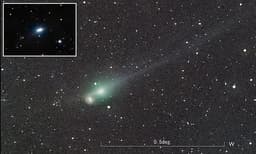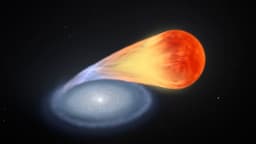Home / Science / Exploding Comet ATLAS Offers Rare Golden Glow
Exploding Comet ATLAS Offers Rare Golden Glow
27 Nov
Summary
- Comet C/2025 K1 (ATLAS) broke into multiple pieces recently.
- It displayed a rare golden hue due to a unique lack of carbon molecules.
- Fragments remain visible in the constellation Leo with telescopes.
The comet C/2025 K1 (ATLAS), originating from the Oort Cloud, has fragmented into several pieces following its close approach to the sun. This spectacle followed a period of unusual activity where the comet developed a rare golden hue. This distinctive color is thought to be caused by a surprising lack of carbon-bearing molecules in its nucleus, making it one of the least carbon-rich comets ever observed.
Initially discovered by the ATLAS telescope network, this comet shared its name with the more famous interstellar visitor 3I/ATLAS, though they are unrelated. Astronomers had predicted that the comet's journey near the sun might cause it to break apart. Following an observed brightening event, the comet fractured into at least three, and possibly four, distinct fragments.
While this fragmentation diminishes hopes of studying its unique composition up close, the comet's remnants are still visible. Observers with binoculars or telescopes can locate the fragments in the constellation Leo. This event highlights the dynamic and often beautiful nature of celestial bodies in our solar system.




